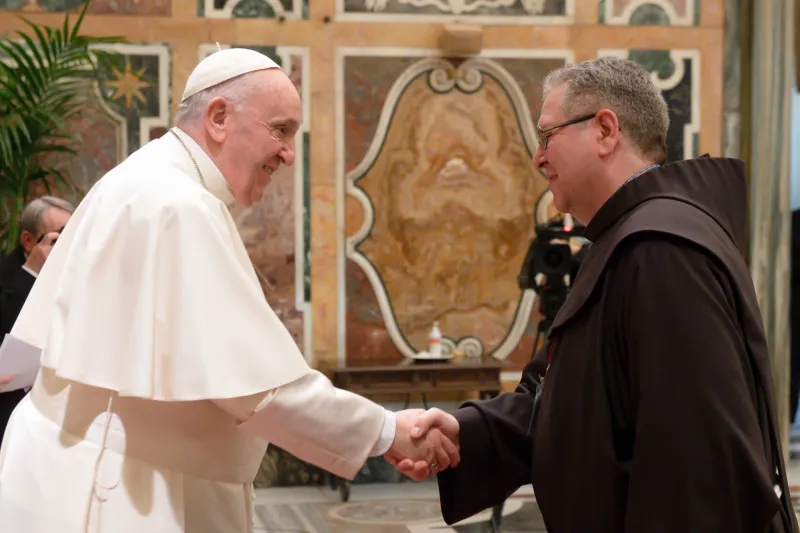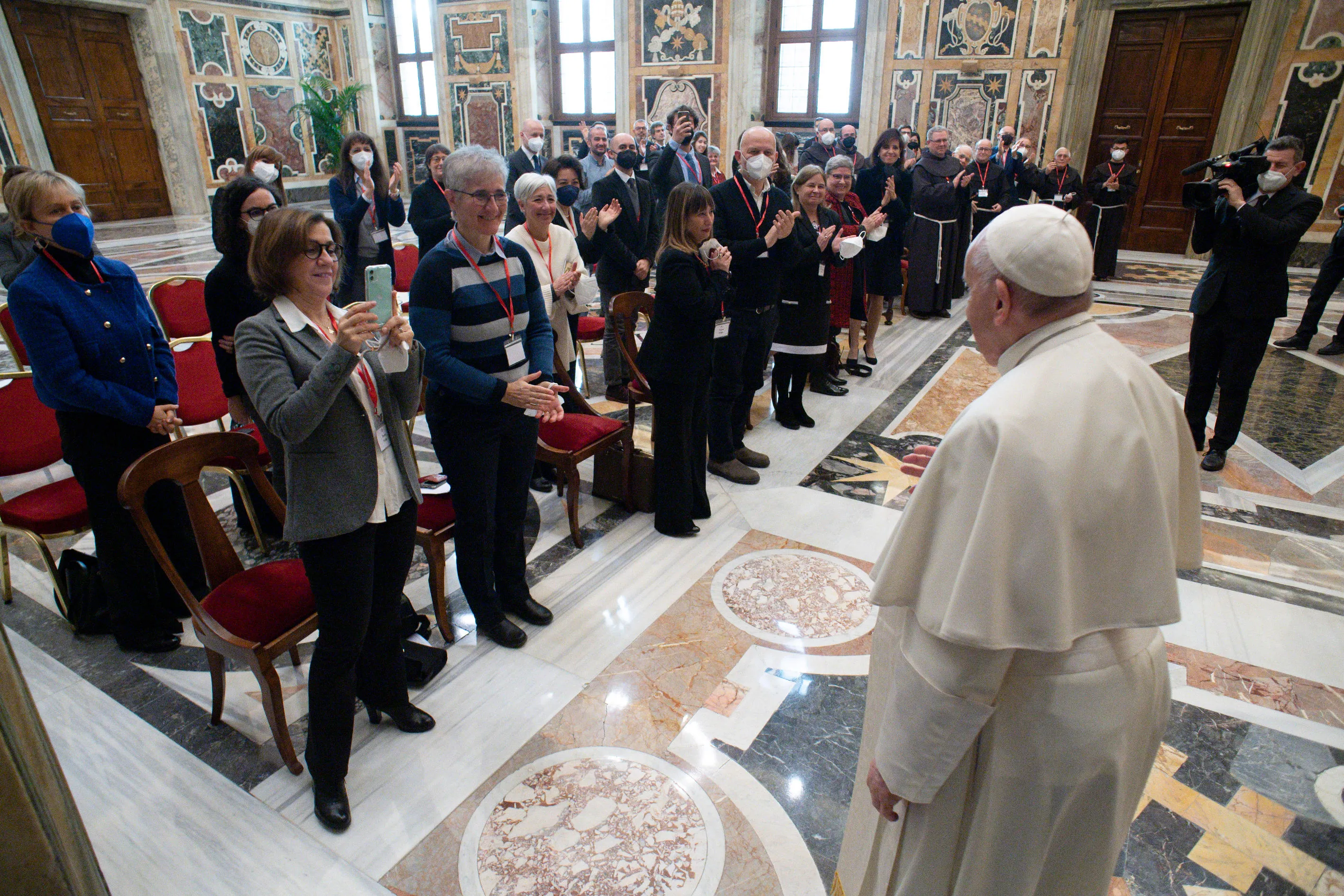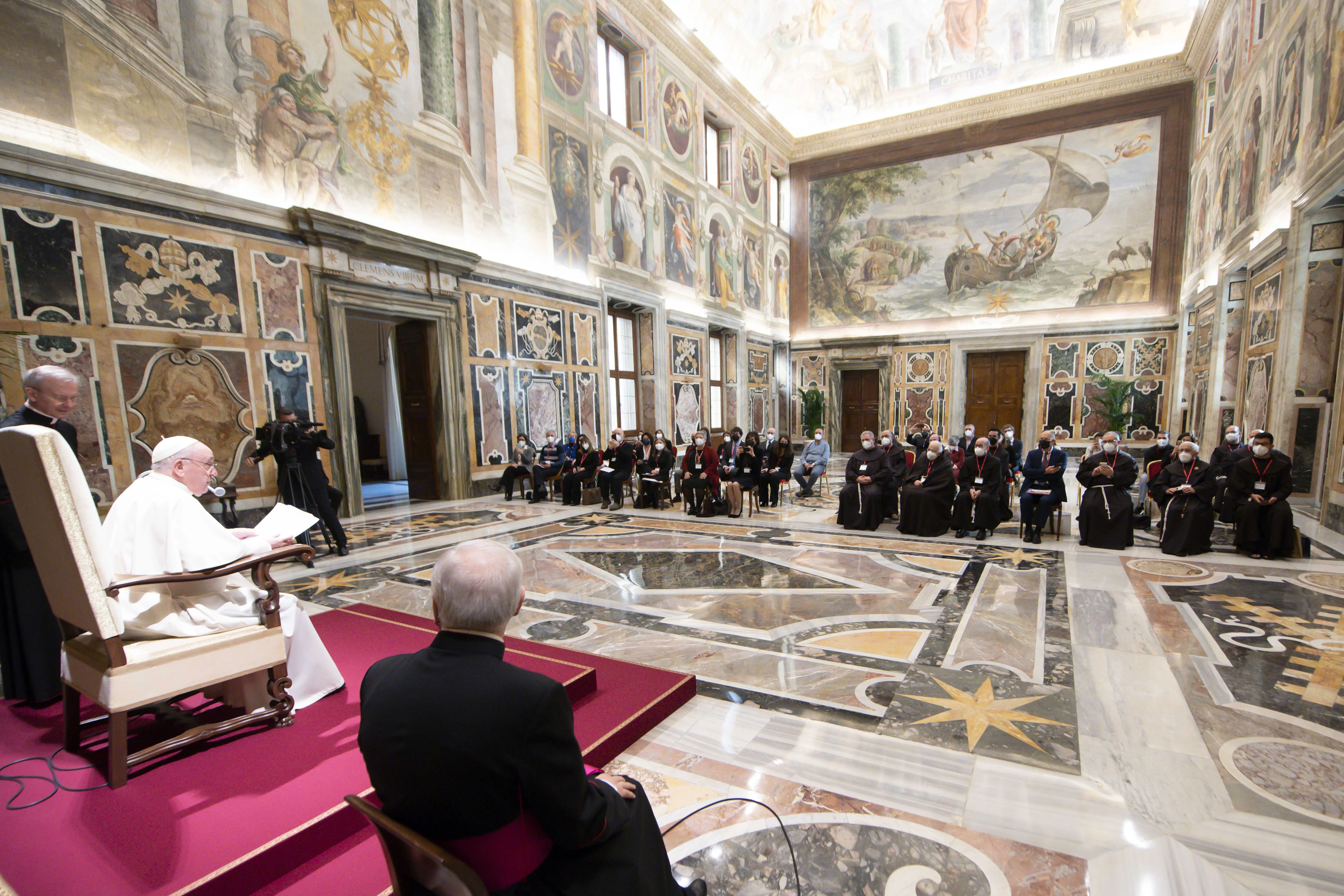
Vatican City, Jan 17, 2022 / 10:00 am (CNA).
Pope Francis has urged journalists in the Middle East to keep telling stories from the Holy Land, calling it the “Fifth Gospel.”
“Making the Holy Land known means transmitting the ‘Fifth Gospel,’ that is, the historical environment and geographical area in which the Word of God was revealed and then made flesh in Jesus of Nazareth, for us and for our salvation,” the pope said in the Apostolic Palace on Jan. 17.
“It also means making known the people who live there today, the life of the Christians of various Churches and denominations, but also those of Jews and Muslims, to try to build, in a complex and difficult context like that of the Middle East, a fraternal society.”
The phrase “the Fifth Gospel” has been invoked by popes from Paul VI to Benedict XVI to describe the Holy Land.
In his speech, Pope Francis quoted Benedict XVI’s description of the Holy Land as the place where the history and geography of salvation meet.
“There ‘we can see, indeed, tangibly feel the reality of the history that God brought about with men and women; beginning with the places of Abraham’s life and including the places of Jesus’ life, from the Incarnation to the empty tomb, the sign of his Resurrection. Yes, God entered this land, he acted with us in this world,’” Pope Francis said, quoting Benedict’s Regina Coeli address from May 17, 2009.
“And the Paschal Mystery also illuminates and gives meaning to today’s history, to the journey of the peoples who live in the Holy Land today, a journey unfortunately marked by wounds and conflicts even today, but which God’s grace always opens to hope, the hope of fraternity and peace,” Francis said.

The pope met with a group of journalists from the Jerusalem-based Christian Media Center as it celebrates the 100th anniversary of its flagship Italian magazine, “La Terra Santa.”
Fransican Father Francesco Patton, the Custos of the Holy Land, led the delegation.
“The service you carry out today is on the line of continuity with the communicative intuition that 100 years ago guided the Custos Ferdinando Diotallevi, and consists – as he wrote in the first issue of the magazine – in ‘making the Holy Land better known, the Land of God, the cradle of Christianity, the venerable sanctuaries where the Redemption of mankind was accomplished,’” Francis told the journalists.
“Through the means of social communication you can enrich the faith of many, even of those who do not have the opportunity to make a pilgrimage to the holy places,” he said.
Both the media center and the magazine are affiliated with the Franciscan Custody of the Holy Land founded by St. Francis of Assisi in 1217.

Before his speech, Pope Francis apologized that he had to speak while sitting because his leg was in pain.
“Excuse me if I stay seated, but I have a pain in my leg today … It hurts me, it hurts if I’m standing,” the pope said.
The 85-year-old pope has suffered from sciatica for a number of years. He spoke about it during an in-flight press conference returning from a trip to Brazil in July 2013.
Pope Francis thanked the journalists in particular for telling the stories of people from Syria, Lebanon, Palestine and Gaza, where the realities are “most difficult.”
“I know that you try to present stories of the good – those of active resistance to the evil of war, those of reconciliation, those of restoring dignity to children robbed of their childhood, those of refugees with their tragedies but also with their dreams and hopes,” the pope said.
“Thank you because, in order to work in this way, you have not spared the soles of your shoes, and I know that you will not spare them in the future either, in order to be able to tell all of this.”
“When you tell the story of the Holy Land, you tell the ‘Fifth Gospel,’ what God continues to write in history,” Pope Francis said.
If you value the news and views Catholic World Report provides, please consider donating to support our efforts. Your contribution will help us continue to make CWR available to all readers worldwide for free, without a subscription. Thank you for your generosity!
Click here for more information on donating to CWR. Click here to sign up for our newsletter.




Leave a Reply